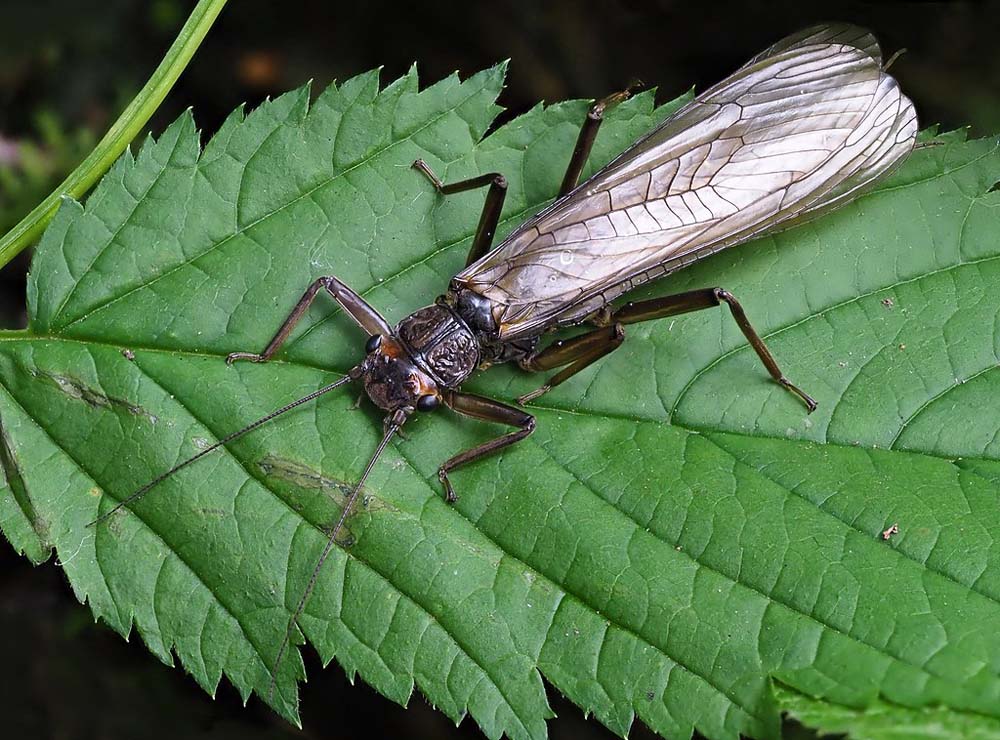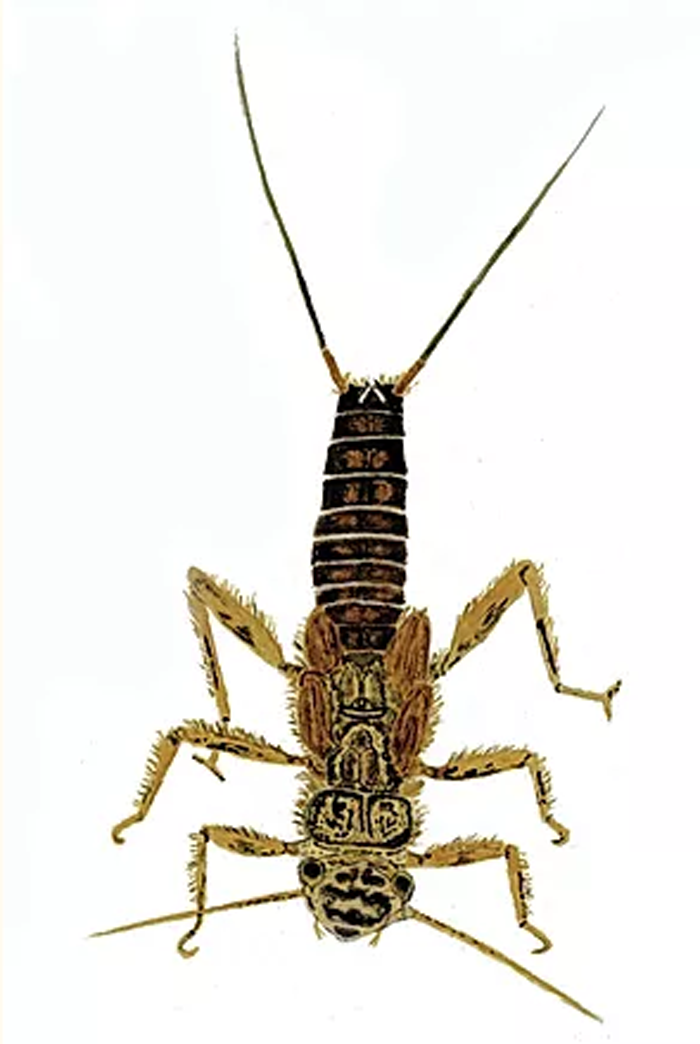
Image large stonefly (Plecoptera, Perlidae sp.), Skole, Lviv Oblast, Ukraine. Photo credit
Frank Vassen, Brussels, Belgium, 7 July 2019. Wikimedia commons image.
About the Tube Stonefly Nymph

Ruben Martin is internationally recognized as one of the most innovative fly tyers. His knowledge of tube flies is shared weekly by this FREE magazine. Contact Martin here . . .
By Ruben Martin
Big nymphs are suitable for fishing in almost every environment where you can fish for trout; among these great nymphs, the most popular ones are, without a doubt, imitations of big Plecoptera [stoneflies].
It’s because of this that these tube flies are fascinating, given that they combine the significant advantages of the tube flies, like the possibility to replace the type and size of the hook to your liking and to replace damaged hooks, adjusting it to the fishing conditions you might be on.
An important characteristic that big stonefly nymph imitations have is that they must be capable of deepening very quickly; the reason for this is that these kinds of insects are usually rivers that have rapid and turbulent currents where the drifting and deepening time shortens significantly. To accomplish this sinking capacity, it’s always preferable to apply weights, very heavy ones in some cases. In tubes, we can achieve this in many different ways, given that a great diversity of accessories exist, like other types of coneheads, bead heads, or weight bodies. Besides, of course, opt for changing the construction of the nymph for it to have aluminum or brass tubes.
Imagine having a big nymph with which you can try to capture small trouts to large steelheads just by changing the design or type of hook. Well, the Stone Tube Nymph gives you this possibility.

Golden Stone Nymph Stonefly, found Beaverhead River, Montana. By Award winning watercolorist Thom Glace.
These flies can be used in many, many ways, and we won’t go into detail about how to fish with them, as it would become way too extensive; however, we can tell you that these are flies we can fish with both in rivers and lakes and that using them with a drift boat with floating lines set up with long leaders and casting them into the bank, letting them drift parallel to the coast, we will find some very nice surprises.
We hope this aids you in your fishing adventures
Bitten Flies!
This tube nymph model takes its name from the simplicity of its tying.
It is a nymph that can imitate a variety of aquatic insects such as may flies, stone flies, beetles, and some more.
With a marked "jigging" effect when swimming, it becomes an excellent option for fishing stillwaters or lakes.
Also due to its ability to deepen quickly, it is ideal for fishing in large rivers or courses with strong currents.
Classic tube 1.8 mm
Hook retail Pro Bube, adapted
UTC 70 thread
Peacock Thread Thorax
Black rooster feather hackle with short, soft fibers.
Monofilament tails, can be replaced with rubber legs.
tungsten head
Become a member of this channel to enjoy benefits:
/ @rubenmartinflies


